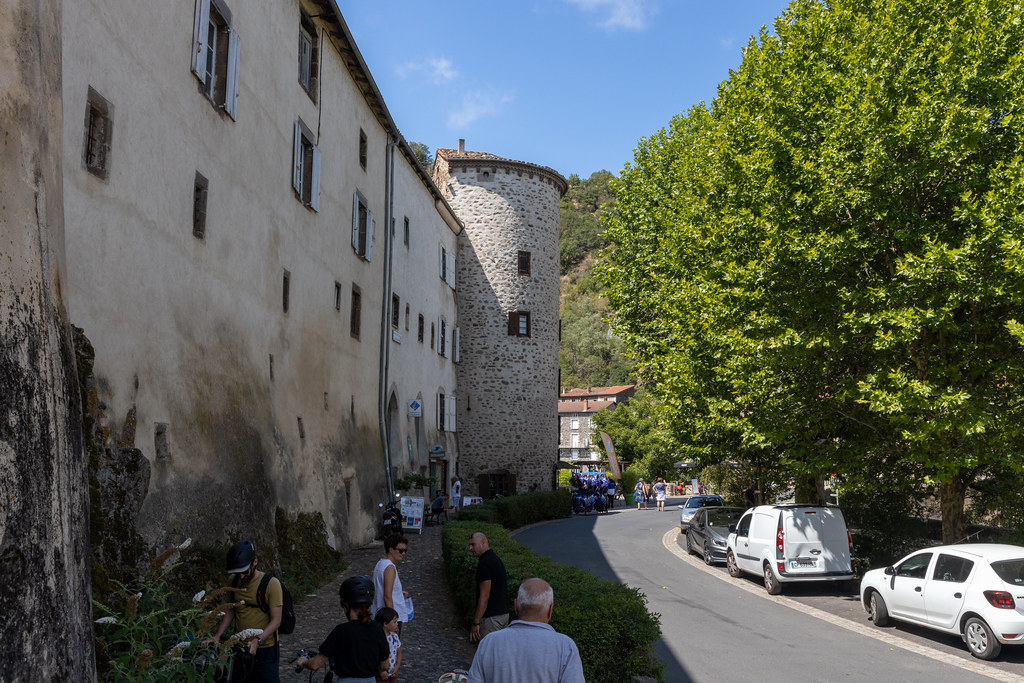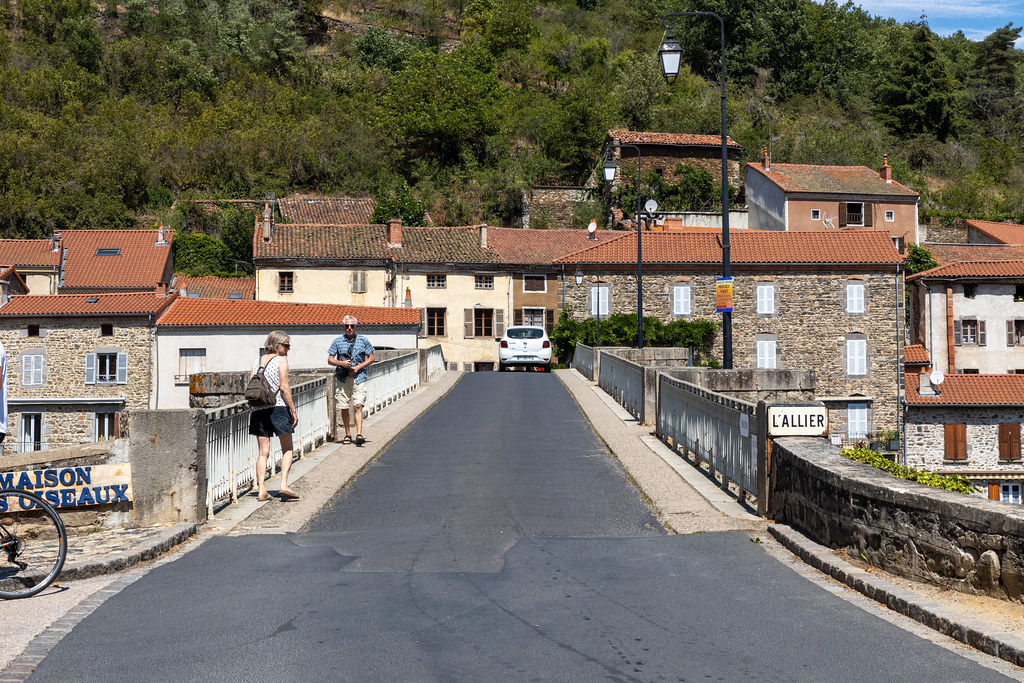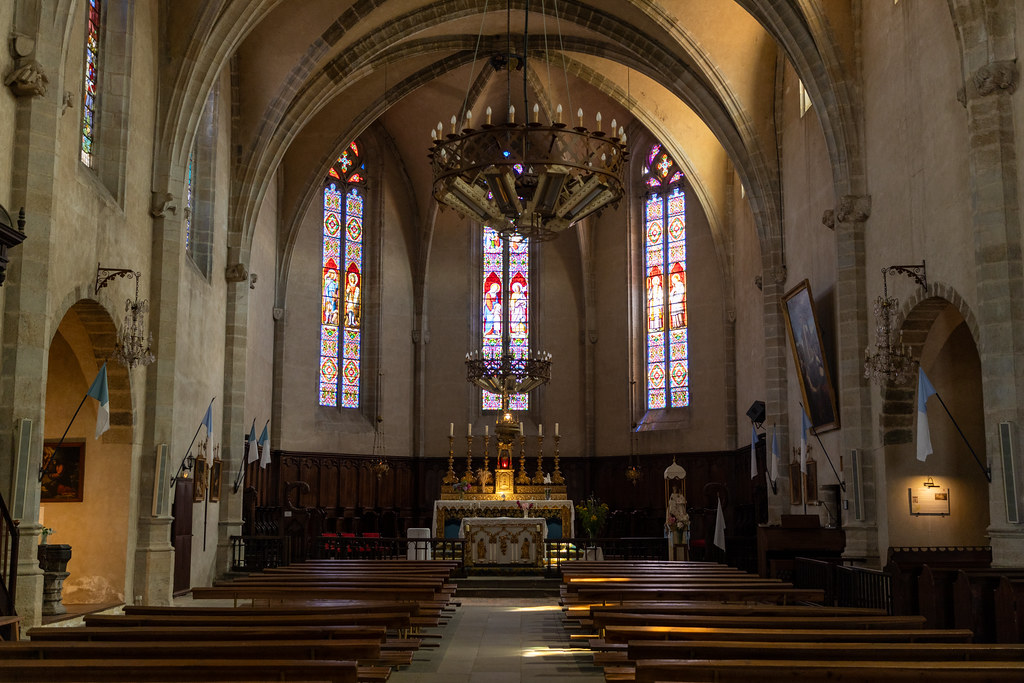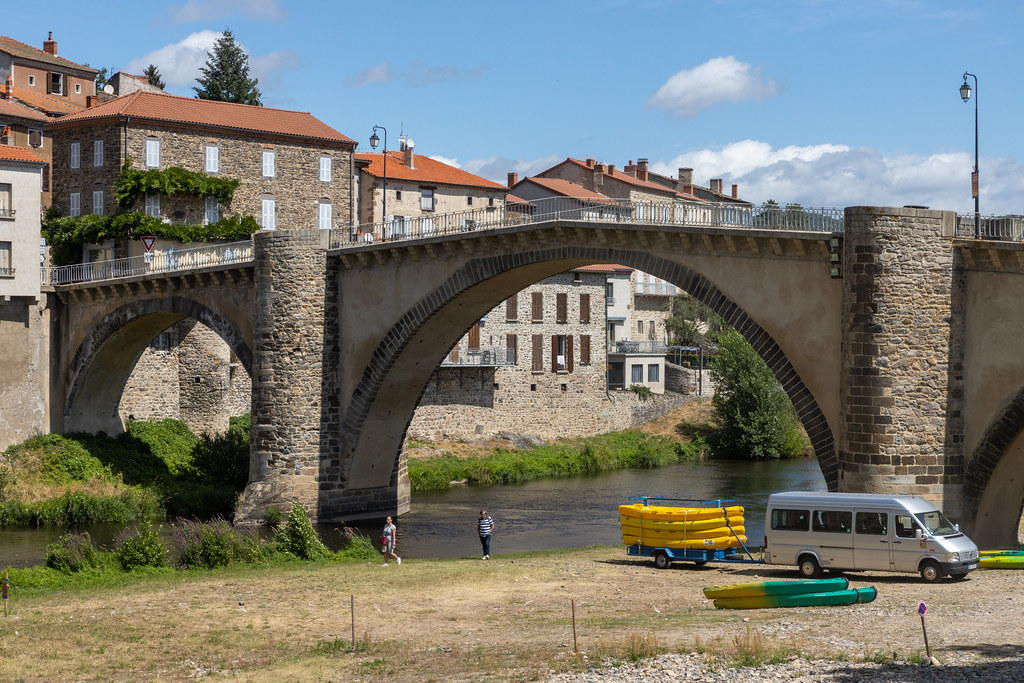Date and Time (Original) – 2023:08:02 19:34:56
From this day on, we began our tour of the beautiful villages in the “Auvergne region”. We had stayed in Clermont-Ferrand the previous day. According to the Exif data of the photos, we arrived in Lavoûte-Chilhac just after 12 pm. That morning, we did a little sightseeing in the city of Clermont-Ferrand and left a little before 11 am, so it took us about 2 and a half hours to reach Lavoûte-Chilhac.
The Auvergne region is sometimes referred to as an “inland island”, and indeed, it’s challenging to access without a car. Even with a vehicle, you need to drive quite a distance to reach your destination. However, the landscape is gentle, rich in nature, and very beautiful, making the drive feel rewarding and joyful. Furthermore, the weather was excellent that day, enhancing the experience even more.
Lavoûte-Chilhac was no exception and was located in the natural-rich environment of the Auvergne region. The village’s location is outstanding as it’s situated right where the Allier River meanders. To be honest, in terms of buildings, there wasn’t much to see. However, it might have been enjoyable if we were to indulge in attractions by the river or the mountains.
Since we arrived just after noon, we had lunch in the village. The duck breast (Magret de Canard) we had was very delicious, with a hearty and rustic feel, typical of the countryside. The portion size was also very satisfying, something you’d expect from a rural area.
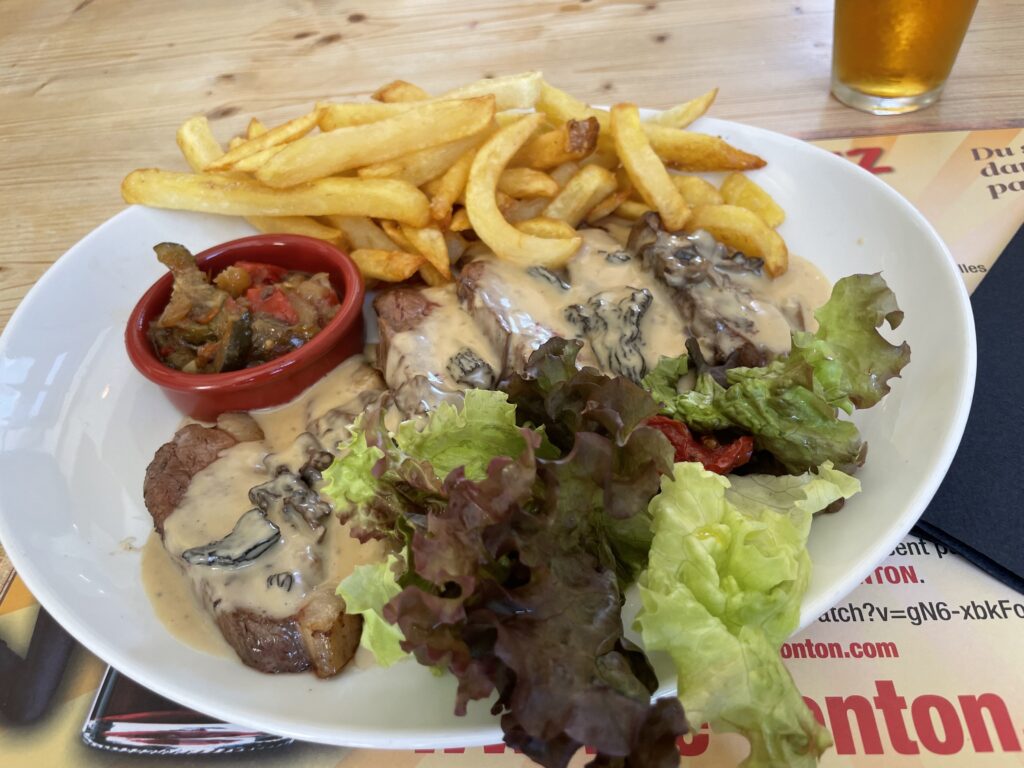
For a detailed description of the village, please refer to the information below.
Lavoûte-Chilhac is a picturesque village located in the Haute-Loire department in the Auvergne-Rhône-Alpes region of south-central France. It’s one of those hidden gems that often captures the hearts of travelers seeking authentic French charm away from the hustle and bustle of the country’s major tourist destinations. Here are some details about Lavoûte-Chilhac:
- Geography: Lavoûte-Chilhac is nestled along the banks of the Allier River. The river, which is one of the main features of the area, meanders around the village, forming a sort of peninsula.
- History: The village has an ancient history with evidence of prehistoric settlements. Over time, it has witnessed various phases of civilization, from the Romans to medieval societies.
- Tourist Attractions:
- Lavoûte-Chilhac Abbey: This ancient Benedictine abbey has seen numerous changes over the centuries. The abbey was originally founded in the 9th century, and the church dates back to the 11th century.
- Museum of Paleontology: This museum showcases the rich paleontological history of the region, especially the finds from the Miocene era.
- Nature: Being situated along the Allier River, the area is ideal for fishing, canoeing, and various water sports. The surrounding landscapes, marked by valleys and plateaus, offer opportunities for hiking and appreciating the biodiversity of the region.
- Local Culture: The village exudes an aura of authentic rural French life. Traditional stone houses, narrow streets, and the tranquility of the Allier River combine to make this village a serene escape.
- Accessibility: Being a relatively smaller and less-known destination, it remains less crowded than many other touristy spots in France. However, the village is accessible by road and is not too far from larger towns and cities in the Haute-Loire department.
- Haute-Loire Department: This department in the Auvergne-Rhône-Alpes region is known for its volcanic landscapes, historical churches, and beautiful rivers. Towns such as Le Puy-en-Velay, known for its cathedral and as a starting point for the Santiago de Compostela pilgrimage route, are part of this department.
In summary, Lavoûte-Chilhac offers a rich blend of history, natural beauty, and local culture. It’s a perfect destination for those looking to experience an authentic and serene side of France. If you’re planning a trip, be sure to allow for a leisurely exploration of the village and its surrounding landscapes.

